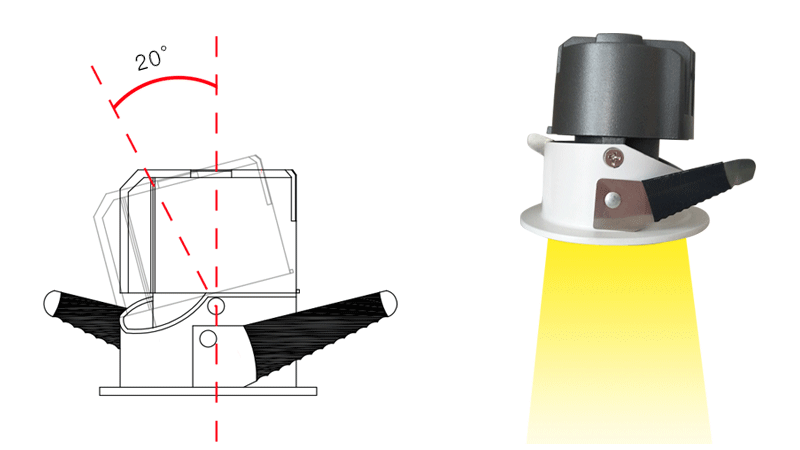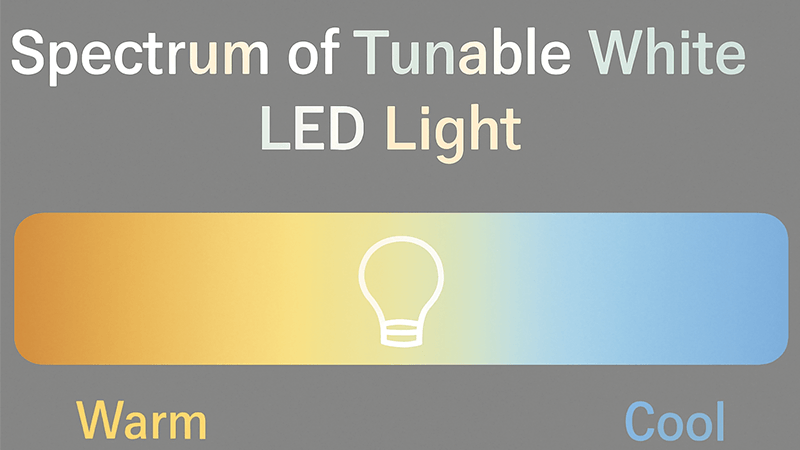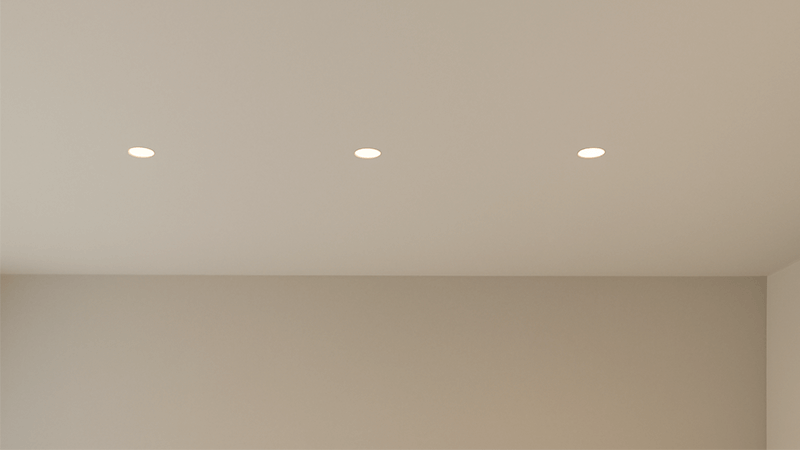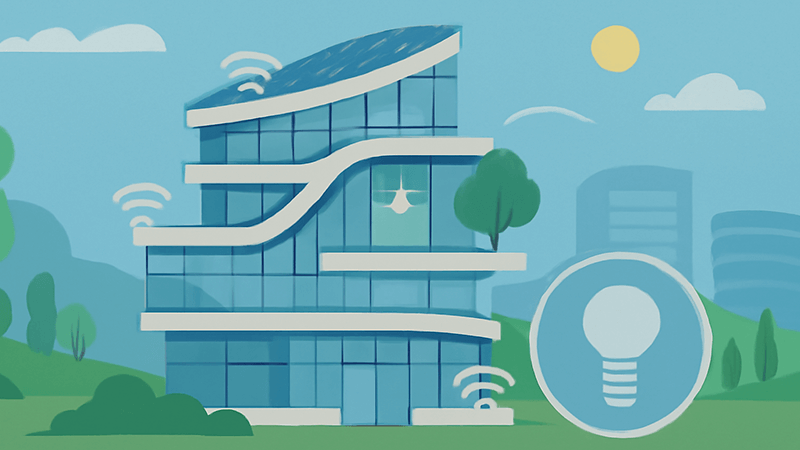Are you struggling to tell which new LED downlights are truly innovative? It’s hard to know if you're getting a real upgrade or just a new look with old technology inside.
The latest innovations in LED downlight design focus on human-centric lighting, enhanced visual comfort, and smart integration. Key advancements include tunable white technology, superior glare control through deep anti-glare optics, higher color accuracy (CRI>95), and seamless connectivity with smart building systems for greater control and efficiency.

I’ve spent my entire career in the LED lighting industry, from working on the factory floor to building my own manufacturing business. I've seen countless trends come and go. The word "innovation" gets used a lot, but what does it really mean for someone like you, a purchasing manager who needs reliable, high-quality products1? Sometimes, a so-called innovation is just a clever way to hide a cost-cutting measure. We need to look beyond the surface and understand the technology that truly makes a difference. Let's dive into the details that separate genuine progress from a simple marketing story.
What is the new technology in LED lighting?
New tech terms like "tunable white" or "human-centric" are everywhere. It can be hard to know what these buzzwords actually mean for your projects and if they are worth the investment.
The newest LED technology centers on Human-Centric Lighting (HCL), featuring tunable white and dim-to-warm capabilities. Other key advancements include increased efficacy (lumens per watt), higher Color Rendering Index (CRI >95), and advanced optical designs2 for better light control and superior visual comfort3.

When we talk about new technology, the goal is always to create a better lighting experience4. Today, that means focusing on both the quality of light and how it affects people. Human-Centric Lighting (HCL) is at the forefront of this. It's an approach that uses light to support our natural circadian rhythms. This is achieved through technologies like Tunable White, which allows you to change the color temperature of the light from a warm, relaxing yellow (like 2700K) to a cool, energizing white (like 5000K) throughout the day. Dim-to-warm technology mimics traditional incandescent bulbs, making the light warmer as you dim it down, which is perfect for creating a cozy atmosphere in hospitality or residential settings.
Beyond making light feel more natural, a major area of innovation is in visual comfort. This has led to a design principle we call "seeing the light, not the source." The goal is to eliminate uncomfortable glare. However, achieving this comes with a trade-off. A true deep anti-glare design, which uses a deeply recessed light source and a black reflector, will naturally sacrifice some light output efficiency. This creates a critical balance for manufacturers between glare control and brightness. I’ve noticed that many low-cost lights take a shortcut here. They skip true anti-glare designs and use shallow, white reflectors. This makes the light fixture itself seem much brighter, but it creates harsh glare and an uncomfortable environment for the people in the room. For a purchasing professional, understanding this compromise is key to sourcing products that deliver on performance, not just on paper specifications.
| Feature | High-End Anti-Glare Downlight | Low-Cost Standard Downlight |
|---|---|---|
| Design Principle | "See the light, not the source" | Maximize apparent brightness |
| Reflector | Deeply recessed, often black-finished | Shallow, white-finished |
| Visual Comfort | Excellent, low glare (UGR<19) | Poor, high glare |
| Efficiency Trade-off | Sacrifices some lumens for comfort | Maximizes lumen output, ignores comfort |
| Application | High-end offices, hotels, homes | Price-sensitive projects, utility areas |
What is a smart downlight?
The word "smart" gets attached to everything, but what does it actually mean for a downlight? It's confusing to know if you're getting a useful tool or just a complex gadget.
A smart downlight is a fixture with built-in wireless communication. This allows it to be controlled remotely through a smartphone app, voice assistant, or an automated system. Core functions include dimming, changing color temperature, scheduling, and integration with other smart devices for centralized control.

A "smart" downlight is simply a light fixture that you can talk to and control without flipping a switch. It has a tiny computer and a wireless radio inside (using protocols like Zigbee, Z-Wave, or Wi-Fi). This allows you to connect it to a network. Once connected, you can use an app on your phone or a smart hub to do much more than just turn it on and off. You can dim the light smoothly, change its color temperature with tunable white technology5, or even select from millions of colors if it’s an RGBW model. This is where the real benefit for large projects comes in. You can group lights together into zones, create specific "scenes" for different activities (like a "meeting scene" in an office or a "dinner scene" in a restaurant), and set schedules for them to turn on, off, or dim automatically.
However, as a manufacturer, I can tell you that the quality of "smart" can vary greatly. The real innovation isn't just connectivity, but how reliably the fixture performs. A critical element often overlooked by buyers is the heat management for these electronics. Smart components generate extra heat. The ideal thermal path for any LED is: Chip → Substrate → Thermal Grease → Heat Sink. A good manufacturer ensures this path is clear and efficient. In cheaper smart lights, I've seen companies cut corners. They might skip the thermal grease entirely or use a low-quality paste. This dramatically increases thermal resistance, causing the smart components and the LED chip to overheat. The result? The "smart" features might fail, the light color can shift, and the overall lifespan of the downlight is drastically reduced. A truly smart downlight is not just connected; it's engineered to last.
How to make downlights look better?
Downlights can sometimes create a ceiling that looks cluttered and generic. You want lighting that not only performs well but also enhances the architectural beauty of a space, not detracts from it.
To make downlights look better, focus on designs that blend into the ceiling. This includes trimless models for a seamless finish, deep anti-glare baffles that hide the light source, and smaller apertures. Using proper beam angles to create deliberate light pools also enhances visual appeal.

Making downlights look better is about making them disappear. The most elegant lighting schemes are those where you experience the light without being distracted by the fixtures themselves. One of the best ways to achieve this is with trimless downlights, which are plastered into the ceiling for a perfectly smooth, "barely there" appearance. Another key factor is minimizing glare. As we discussed, a deep recessed source with a black baffle makes the light source itself nearly invisible from a normal viewing angle. This creates a calm, sophisticated look.
The choice of beam angle is also crucial for aesthetics. This is an area where I see a lot of misleading specifications. A manufacturer might claim a downlight has a 24° beam angle. But you need to ask: at what point is that measured? Often, this is the angle where the light intensity has dropped to 50% of its center brightness. In reality, this can result in a significant amount of "spill light" and a fuzzy, ill-defined light pool on the floor. A top-tier brand will provide specifications based on a stricter standard, like where the intensity is just 10% of the center. This indicates a much cleaner, more focused beam. This precision matters when you're trying to create dramatic accent lighting or avoid light spilling onto walls. The ultimate tool for a professional is the photometric file6, which shows the light distribution curve. Advanced optical designs, like a "batwing" distribution, can shape the light to spread more evenly across a surface, eliminating dark spots between fixtures and creating a more uniform and visually pleasing effect. Cheap lights simply don't have this level of optical engineering.
| Aspect | Inexpensive Downlight | High-Quality Downlight |
|---|---|---|
| Beam Angle Spec | Often misleading (measured at -50% intensity) | Precise (measured at -10% intensity) |
| Light Spill | Significant, creating a "fuzzy" light pool | Minimal, creating a clean, defined circle of light |
| Optical Design | Basic reflector, no advanced shaping | Engineered optics (e.g., "batwing") for uniform distribution |
| Result | Uneven lighting, "hot spots" on the floor | A professional, clean, and intentional lighting effect |
What is the future of LED bulbs?
As a purchasing manager, you need to anticipate trends. You want to know what's next for LEDs so you can make smart, future-proof investments instead of buying into technology that will soon be obsolete.
The future of LED bulbs is smarter, smaller, and more integrated. Expect fixtures to become more compact while delivering higher efficiency. They will be fully integrated into building management systems, with a strong focus on sustainability, including the use of recyclable materials and repairable components.

Looking ahead, the evolution of LEDs will continue on several fronts. First, miniaturization and efficiency will advance together. LEDs will get even smaller while producing more light with less energy, allowing for incredibly discreet and powerful lighting designs. We will move beyond simple smart controls to fully integrated and automated lighting systems. Your lighting will work with sensors to know when a room is occupied, what the natural light level is, and even what activity is happening, adjusting itself automatically for optimal performance and energy savings. This is the true promise of the Internet of Things (IoT)7 applied to lighting.
Sustainability will also become a non-negotiable part of the design. Right now, many LED products are designed to be thrown away when they fail. The future is in modular and repairable fixtures8, where a driver or light engine can be easily swapped out. This circular economy approach reduces waste and lowers the total cost of ownership over a building's life. However, even as we look to the future, we have to be realistic about the present cost pressures. For example, a major trend I've witnessed to reduce costs is the heavy use of plastics. While plastics are necessary for some optical parts, cheap fixtures now use plastic for structural components like the face ring and even the mounting clips. There's a huge cost and performance difference between a high-temperature engineering plastic and standard ABS plastic. Cheaper plastics can become brittle, discolor from heat, and fail over time. As we push toward a more sustainable future, it will be my job, as a manufacturer, to find the right balance between innovative, durable materials and the market's demand for competitive pricing.
Conclusion
In summary, true LED innovation combines smart technology, user comfort, and sustainable design. Knowing the difference between real engineering and cost-cutting is the key to sourcing lighting that performs beautifully for years.
Learn the key features that distinguish high-quality LED products from lower-cost alternatives. ↩
Explore how advanced optical designs enhance light control and improve overall lighting quality. ↩
Understand the importance of visual comfort and how it affects user experience in various settings. ↩
Explore how thoughtful lighting design can enhance ambiance and user satisfaction in various environments. ↩
Learn how tunable white technology can improve lighting flexibility and comfort in your space. ↩
Understand how photometric files help in evaluating light distribution and optimizing lighting layouts. ↩
Explore how IoT technology is revolutionizing lighting control and efficiency in modern buildings. ↩
Discover the benefits of modular fixtures for sustainability and cost-effectiveness in lighting. ↩

